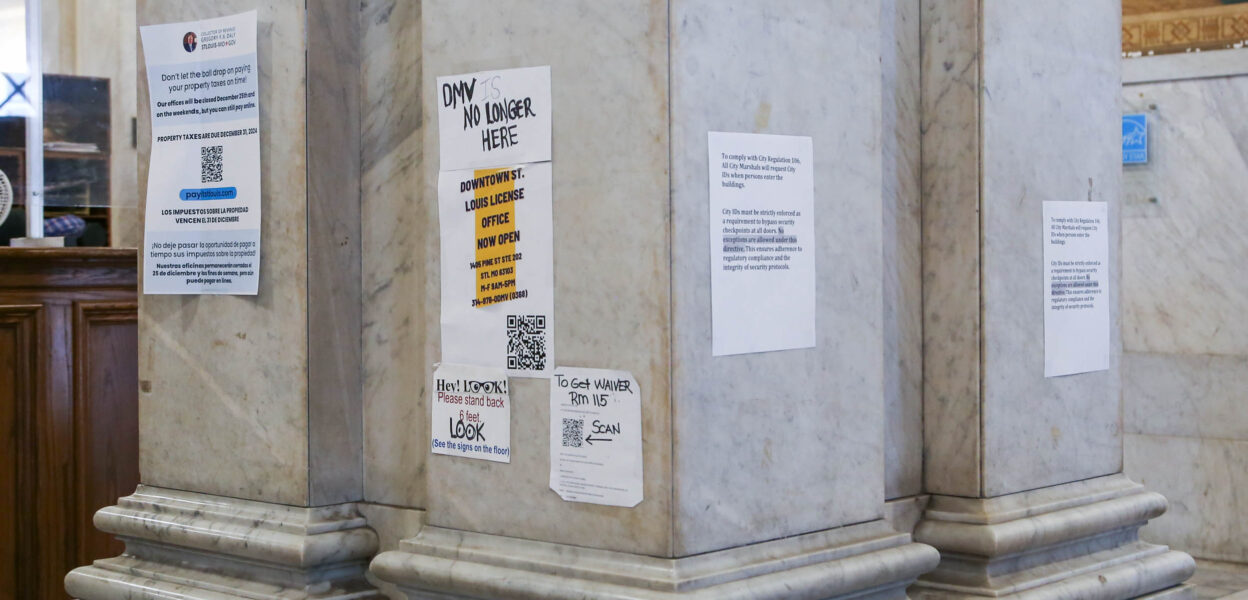Upon arriving at City Hall you’re greeted with a sign indicating a list of payment methods that aren’t accepted for parking. The sign is necessary because visitors to City Hall expect to be able to use these methods.
Instead of adapting the system to the expectations of the user, the user is forced to adapt to the limitations of the system.
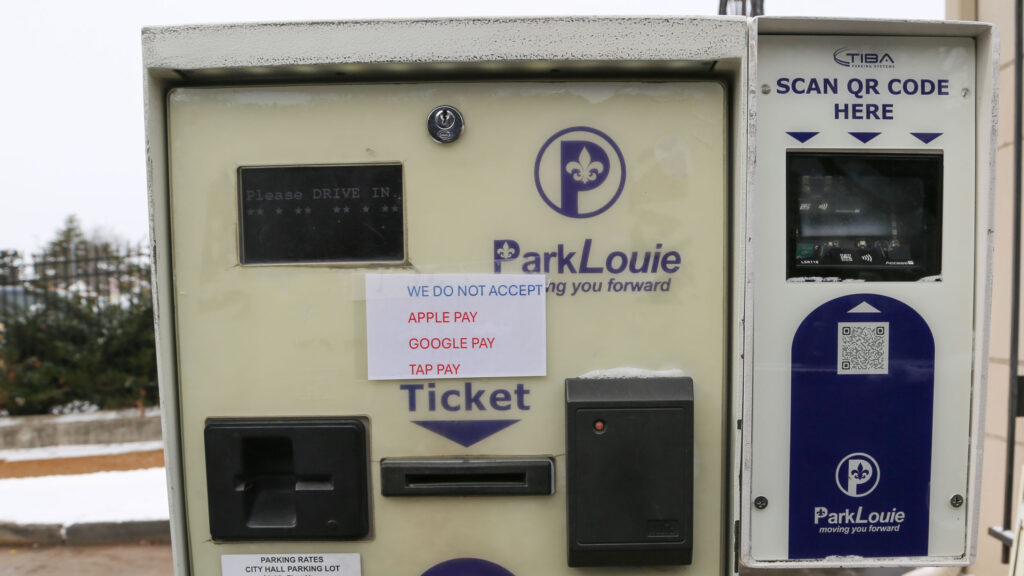
After you park and head towards the nearest entrance, there are what appear to be blank white signs on either side of the stairs. If you look closely you can barely make out that they mention the location of an accessible entrance, but they are too old and sun-bleached to tell where a person in a wheelchair should go to enter the building.
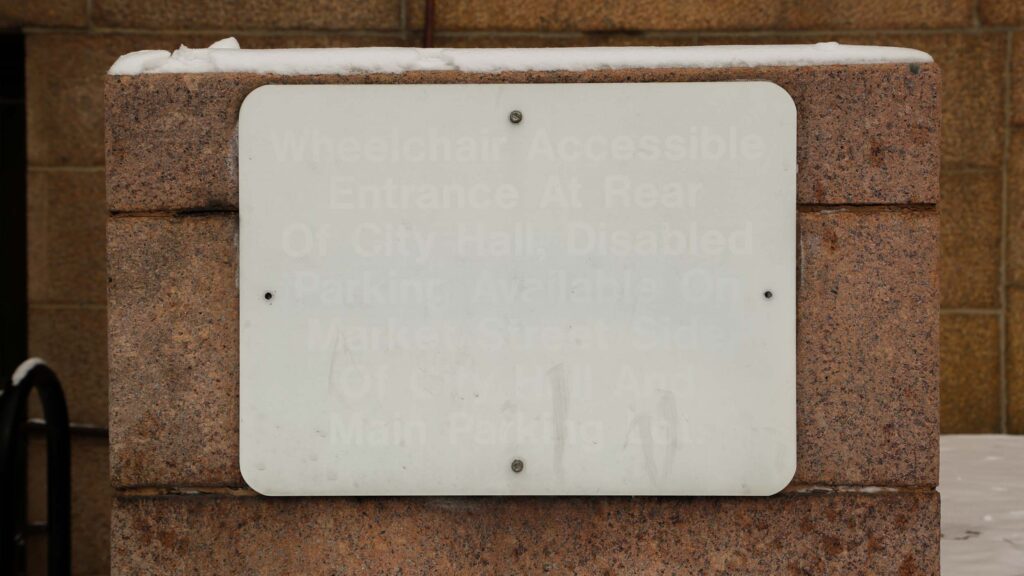
Once you go up the stairs, you encounter a sign that says “This Exit is Closed. Please use Tucker Street Entrance”. The first of many redirects.
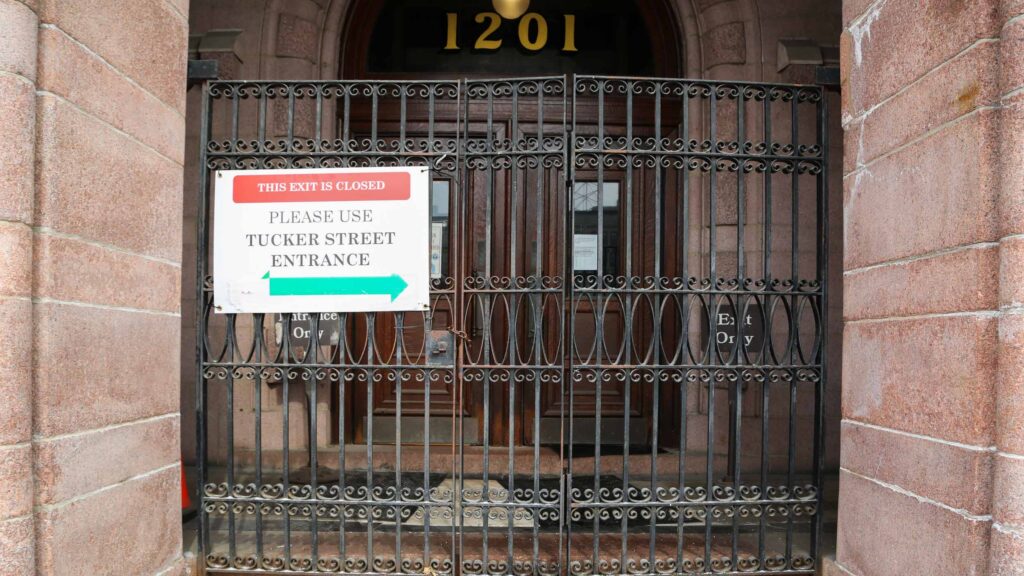
After walking around the corner to Tucker street, there are two sets of giant wooden doors. In North America, people typically enter on the right and exit on the left. As you approach the double doors on the right you counterintuitively find a sign redirecting you to enter the double doors on the left.
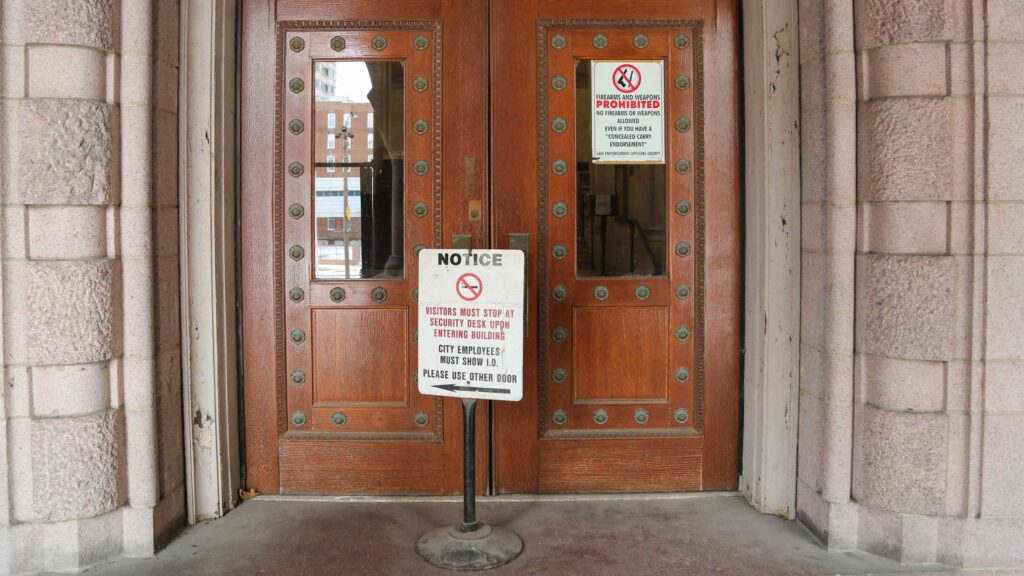
Walking over to the doors on the left you find a sign with orange tape that says “Entrance Only”. The door on the right of the double doors, which most people try first, is locked. So you try the door on the left and finally find a working entrance.
Before entering you notice the large no smoking sign on the entrance door, despite smoking in public places being illegal in Missouri for over three decades.
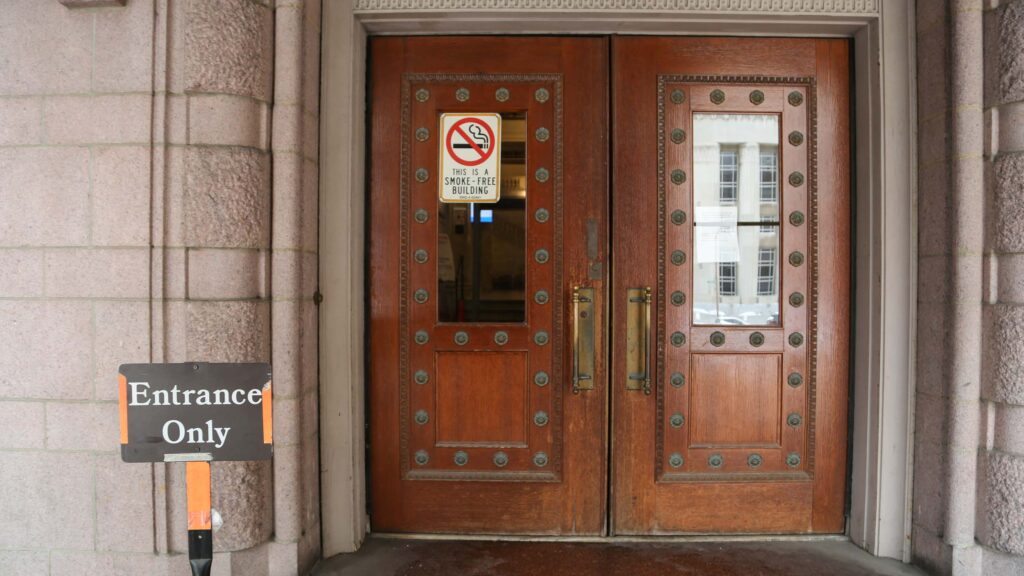
Once, inside the first thing you notice is this place has good bones. Beautiful stone floors and columns, and a coffered ceiling.
The second thing you notice is the scotch tape and printer paper all over everything. Hand-written and printed signs taped to the granite walls, columns, and even the floors.
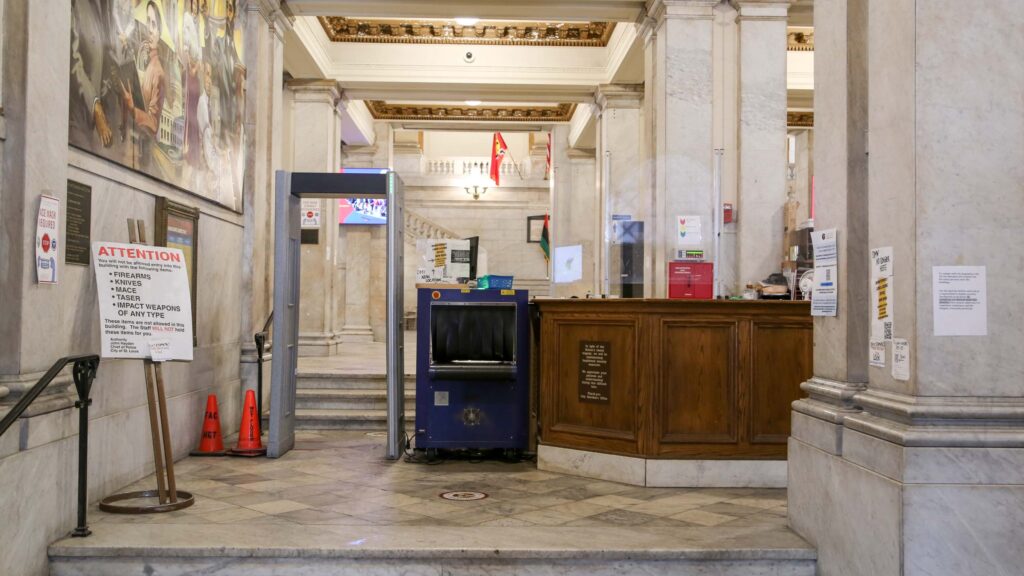
As you approach the metal detector there’s one prominent sign that’s not made on an office printer. It reads “In light of the Nation’s recent tragedy, we will be implementing heightened security measures.” What’s the recent tragedy? Is this from September 11, 2001??
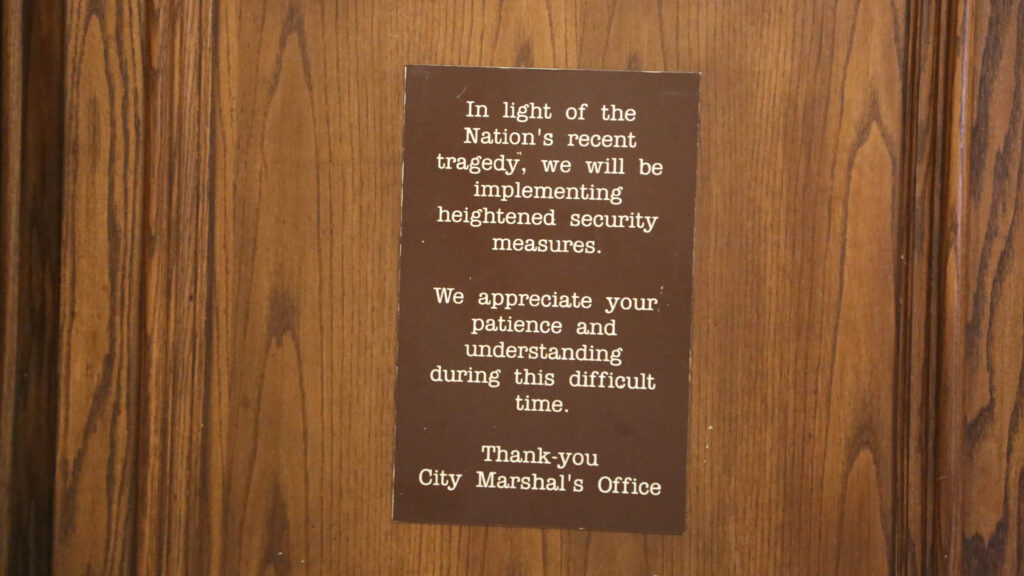
Heading up to the Excise Division on the 4th floor, you can see that the Excise Commissioner’s preferred method of communication is the City Hall standard of printer paper and scotch tape. “Effective Immediately” memos dating back to 2021 are taped to the door.
When repairing walls, a more robust blue painter’s tape is used to ensure the cardboard patch is well-adhered.
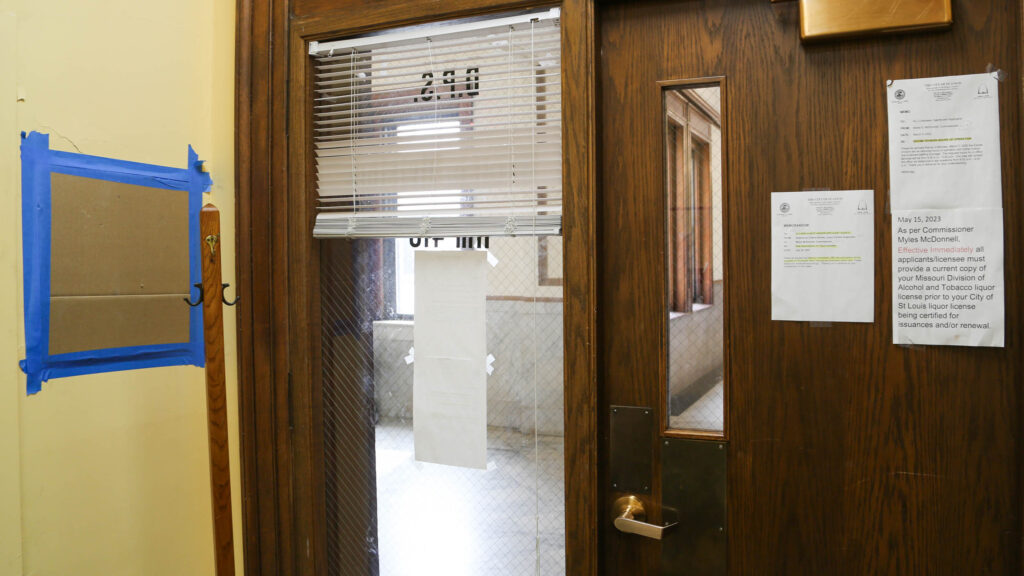
At the Office of Special Events you can sense the frustration in the “DROP SLOT” sign. You can picture someone saying to themselves “Why do people keep asking if the drop slot is the thing that looks like a mail slot? Maybe we need a bigger arrow?”
This office is also one of many “Norman Doors” at City Hall. From 99% invisible: “A so-called “Norman Door” has design elements that give you the wrong usability signals to the point that special signage is needed to clarify how they work.”
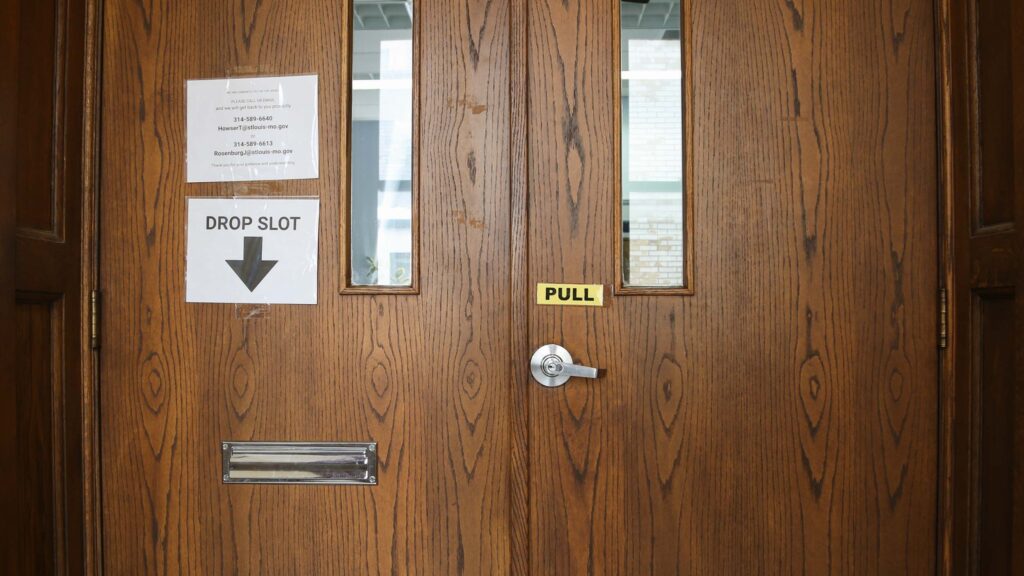
Here’s another Norman Door that tells you to push, but please open slowly. And then says that you shouldn’t come in here at all. And lastly, if you came here looking for inspectors, go to room 407.

The building division is engaged in a coverup.

Office 406 appears to be a green room for building inspectors, police officers and firefighters where smoking upside down is not allowed. Taping of paper signs inside is encouraged.

Three out of four bats are not allowed in room 426A.
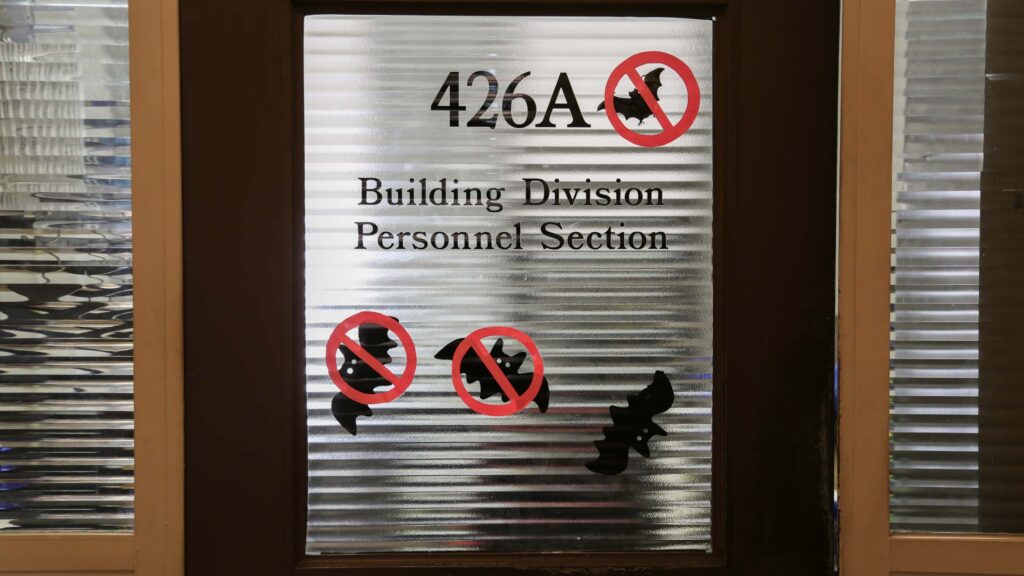
You can tape whatever you want on this wall.
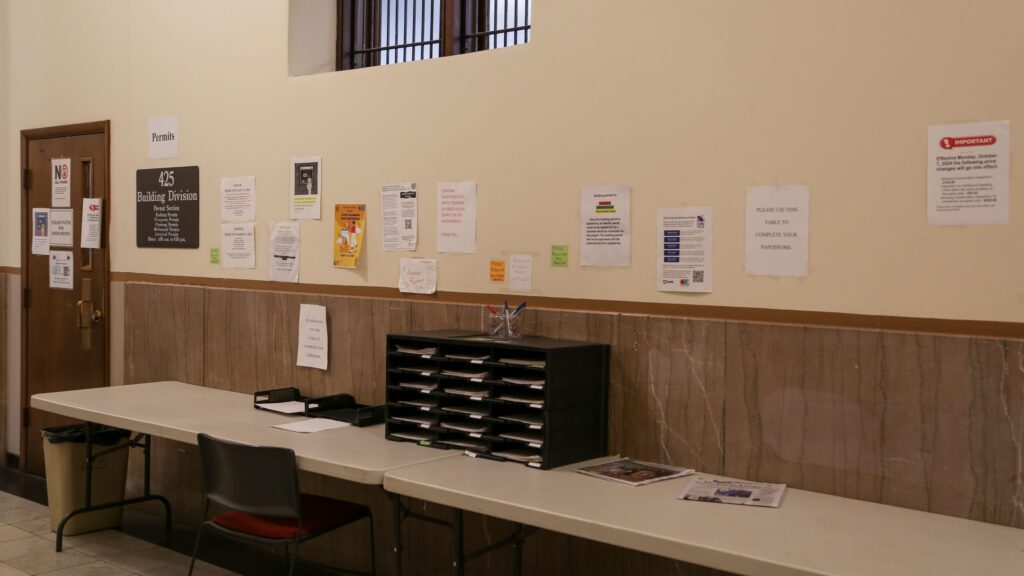
But please do not use this table to complete your paperwork.
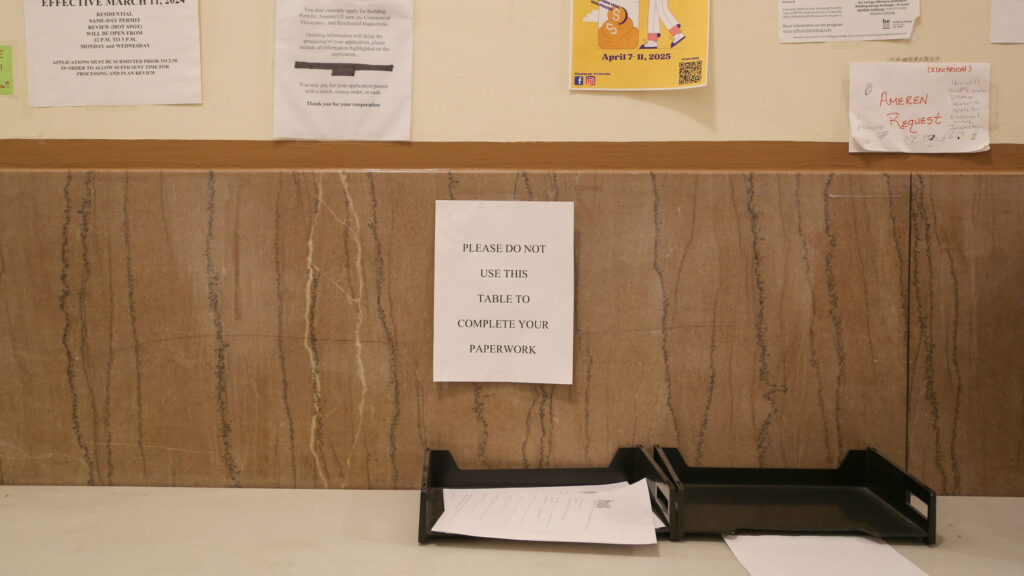
There’s a tripping hazard at the entrance to room 128. Instead of fixing it and bringing it into compliance with generally accepted safety standards for public buildings, two caution signs advise you to watch your step.
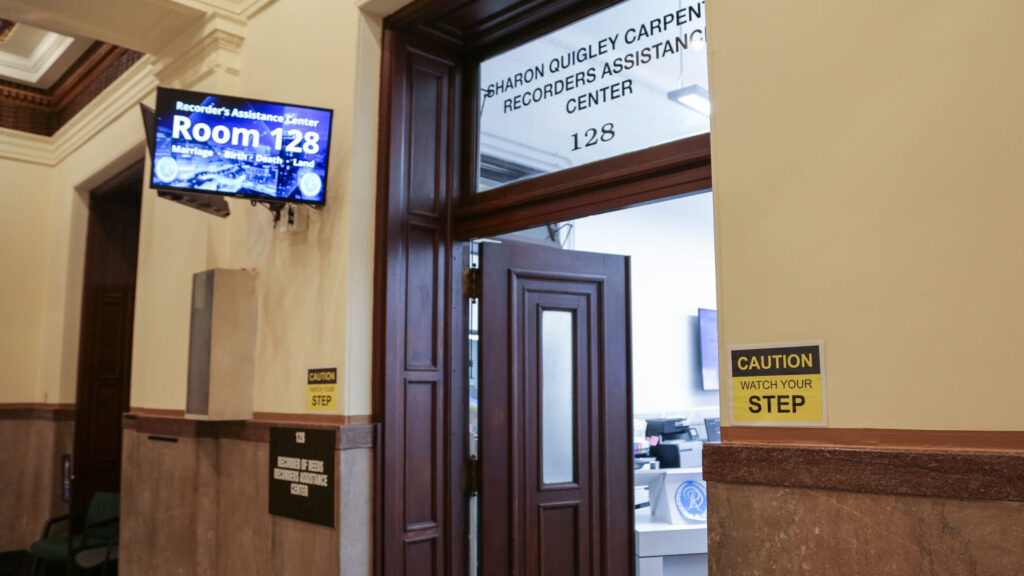
Someone tried to class up these signs redirecting you to another entrance with blue paper, a serif font, and a vintage manicule.
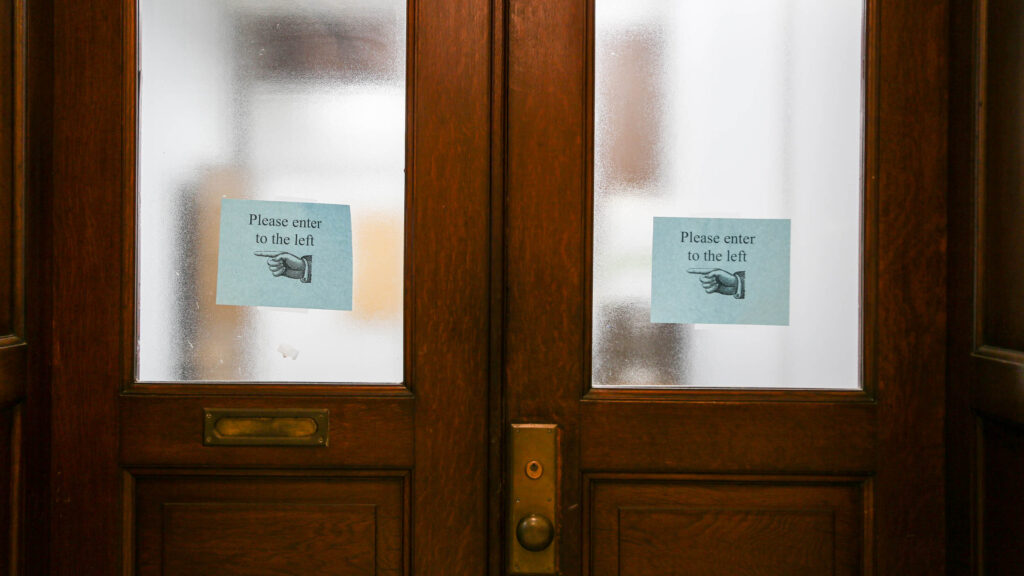
The City Counselor’s office keeps their makeshift wayfinding signage simple.

The internet is printed out on this bulletin board for your convenience.
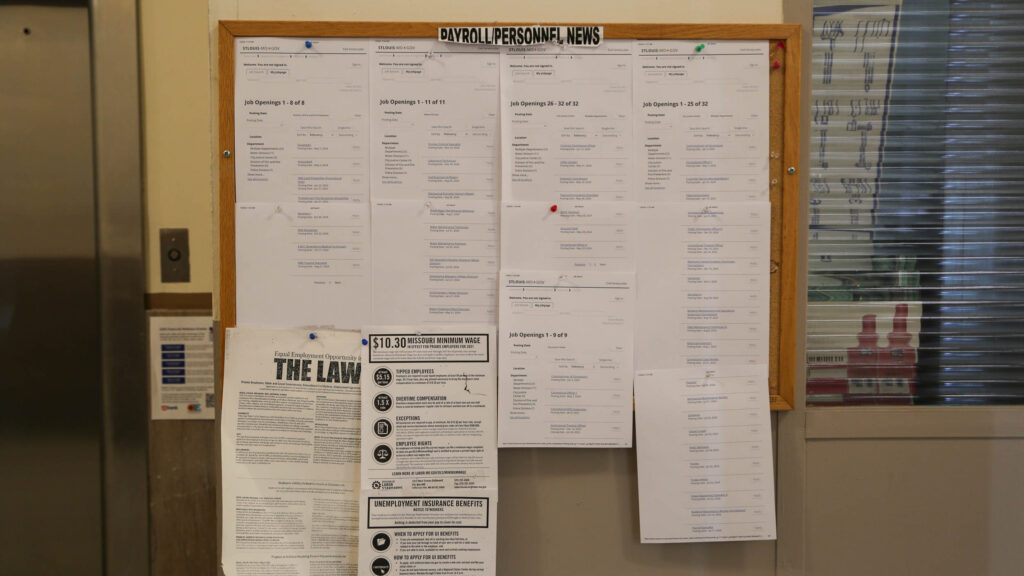
These four chairs are property of the license collector. And so are the five signs taped to the wall.

“Please don’t remove any furniture from this area. We use it for bananas. Thanks – Rm 422.”
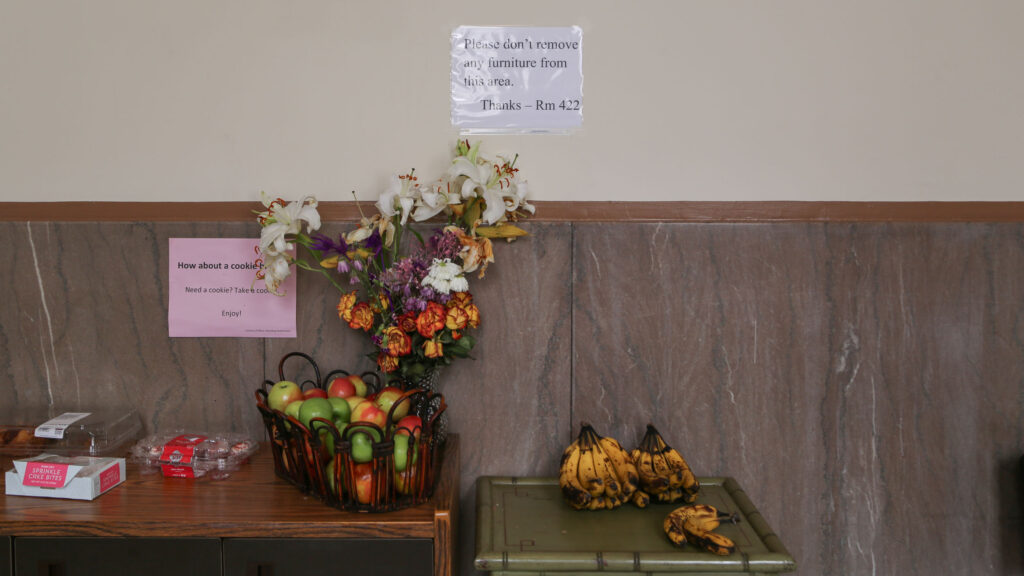
The assessor’s office is concerned about earthquakes. So they printed out signs about earthquake safety and taped them outside each entrance to their offices.
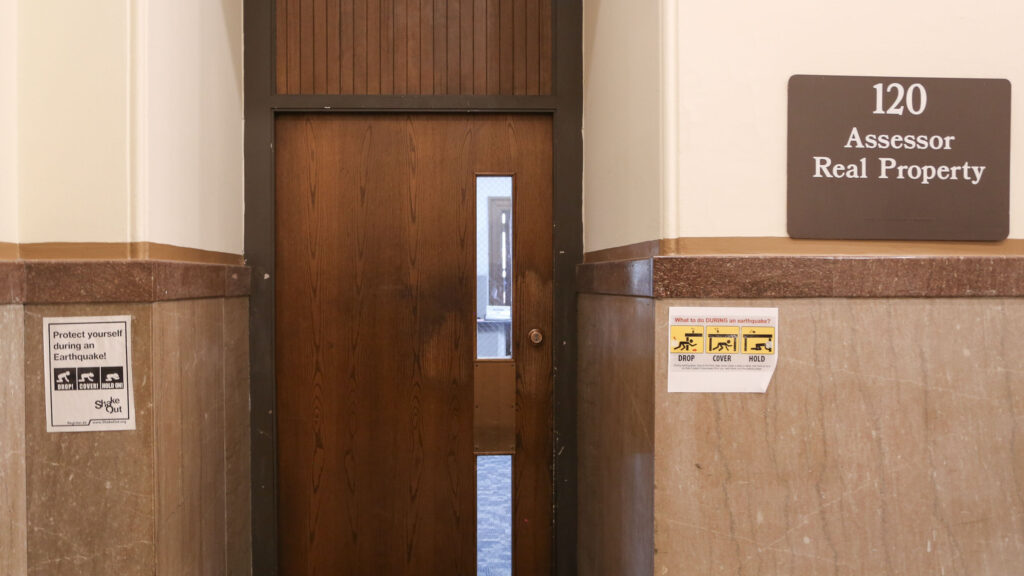
The Mayor would like you to know that “THE ENTIRE MAYOR’S OFFICE COMPLEX IS A SMOKE FREE ENVIRONMENT”. In solidarity with other City Hall offices, the Mayor’s office also has a paper sign taped to the front door.
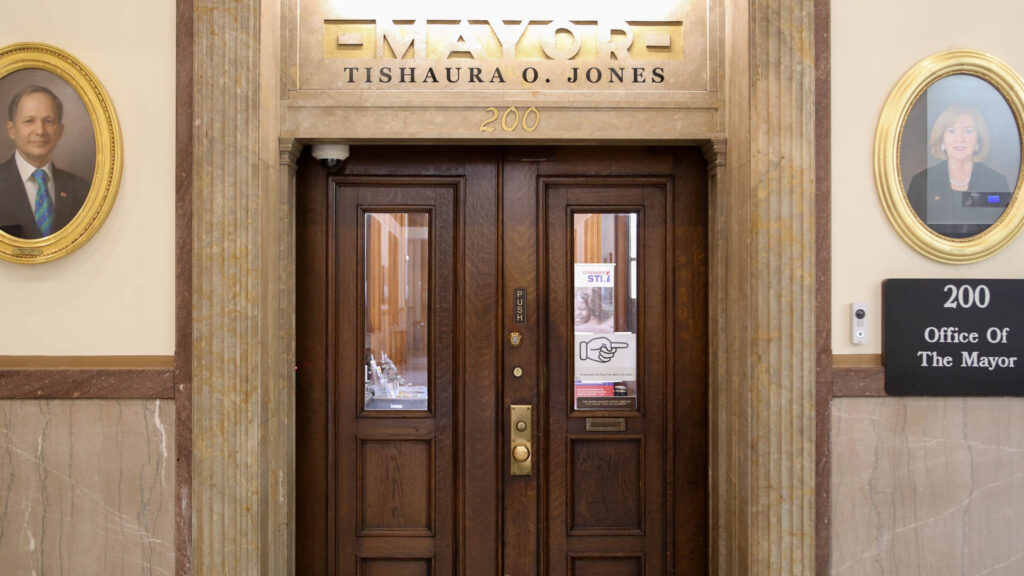
The historic doors to the Kennedy Hearing Room are the perfect place to promote your next event. BYO scotch tape.
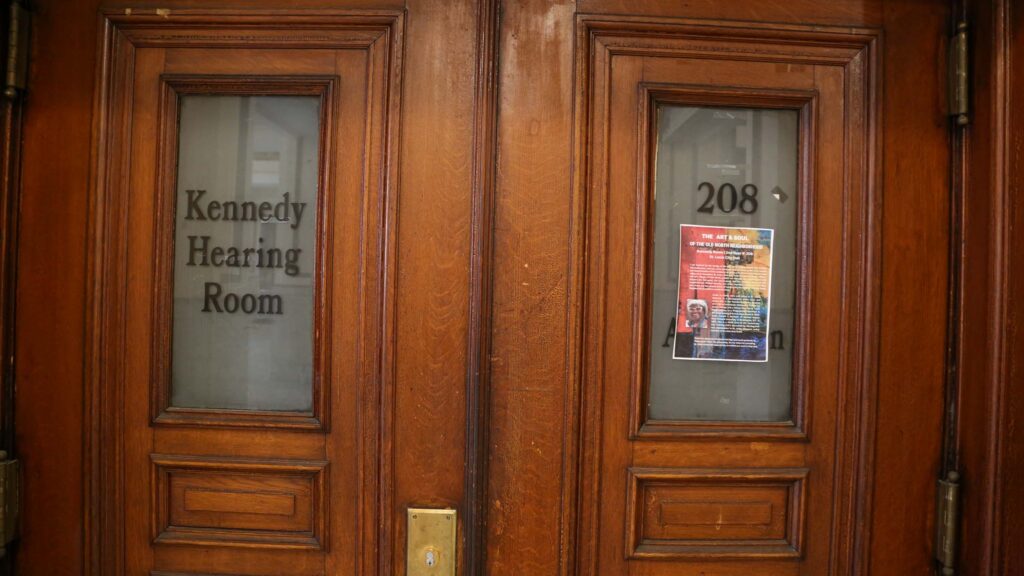
You can also advertise your home for sale at City Hall. Tape your flyer to the wall. Or if you want it to look more official put it inside the case.

Luxury apartment rental listings are welcome too.
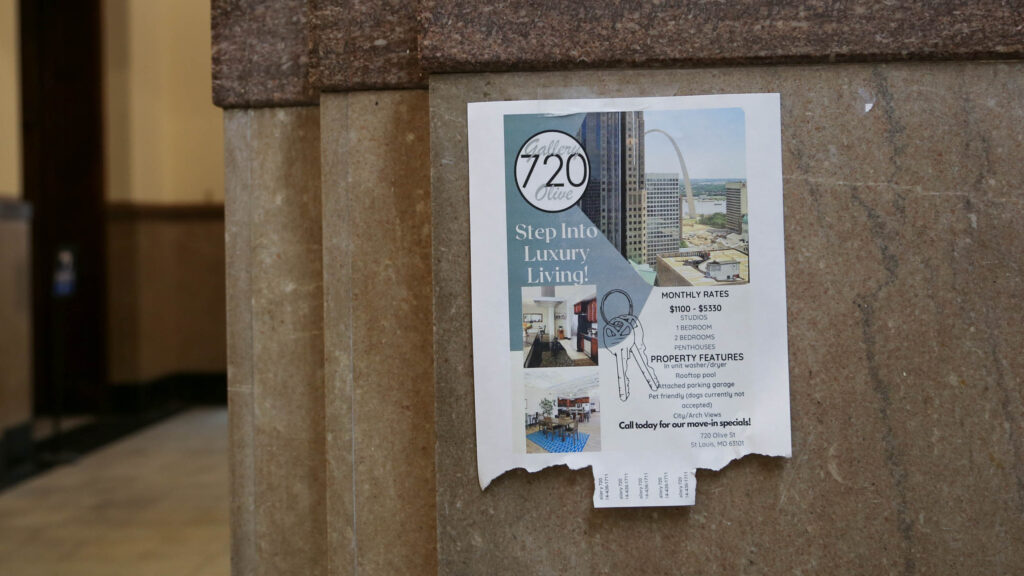
If you have trouble remembering the address of things like the Forestry Division or the Street Department you can google it. Or you can print it out and tape it to the wall.
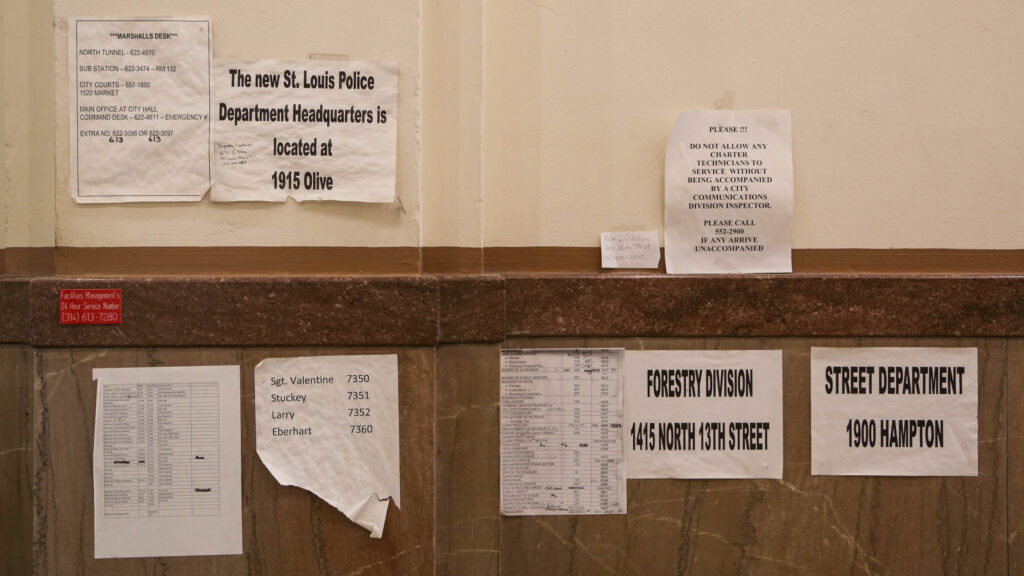
And if you sometimes forget that you can google things, you can make a note to yourself. And then print the note out and tape it to the wall. Like this one: “TRY THIS IF THE QR CODE DON’T WORK FOR YOU – Google City of St. Louis Virtual Lobby”
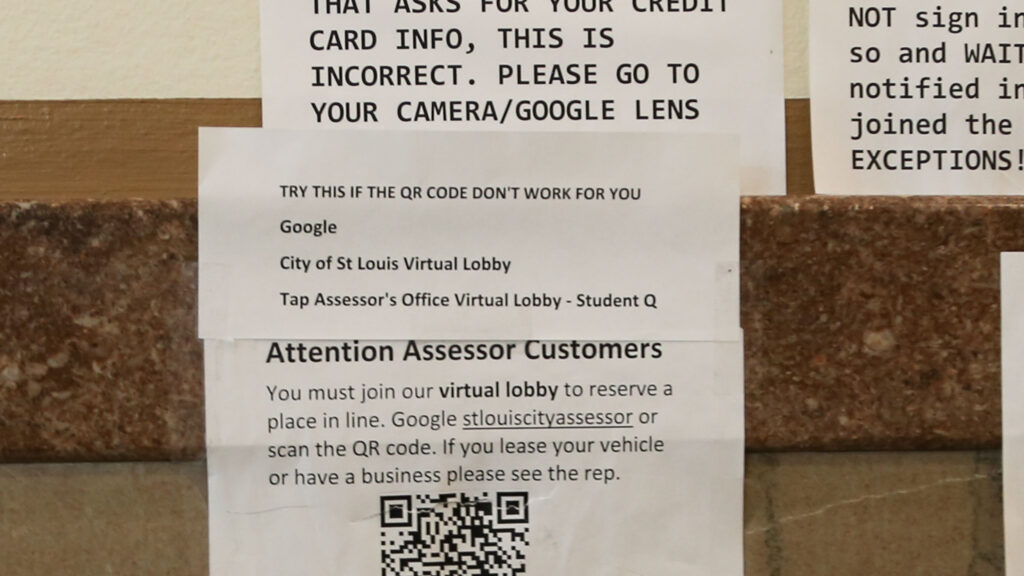
How long has it been since City Hall had a cafeteria?
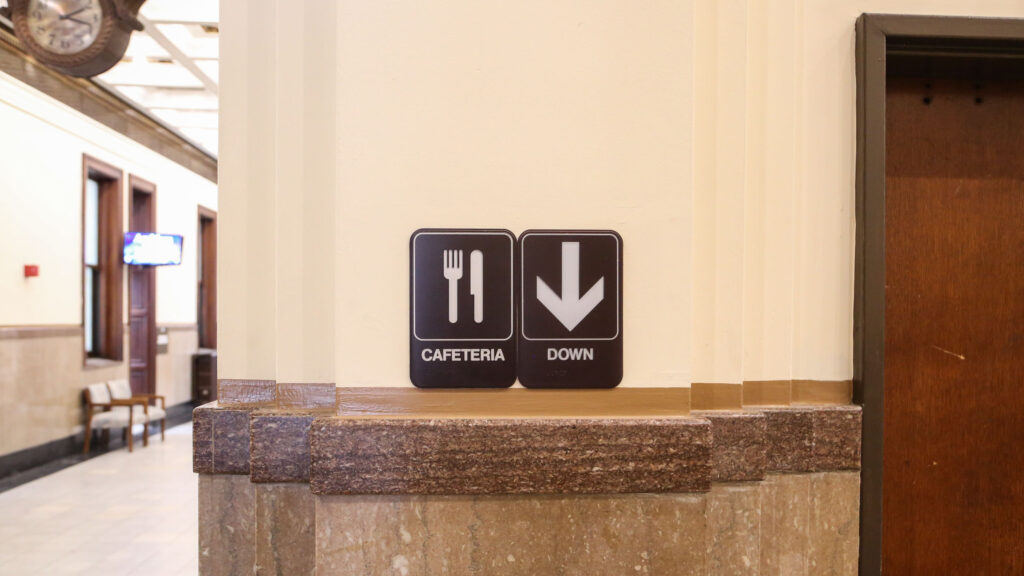
If you need a defibrillator you won’t find one in the defibrillator box.
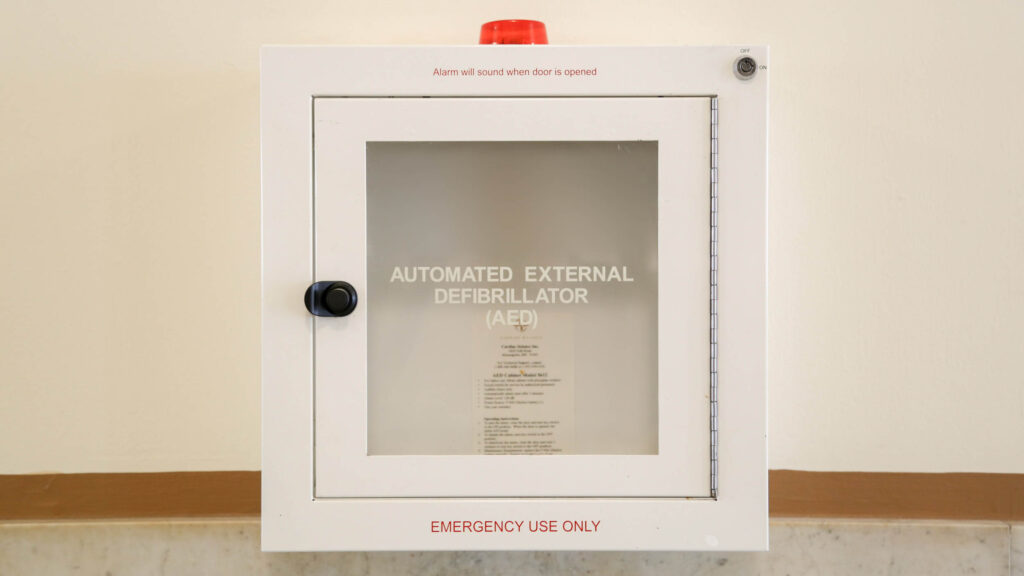
The City Hall north exit is blocked with some nice copper stanchions, velvet rope, and miscellaneous signs.
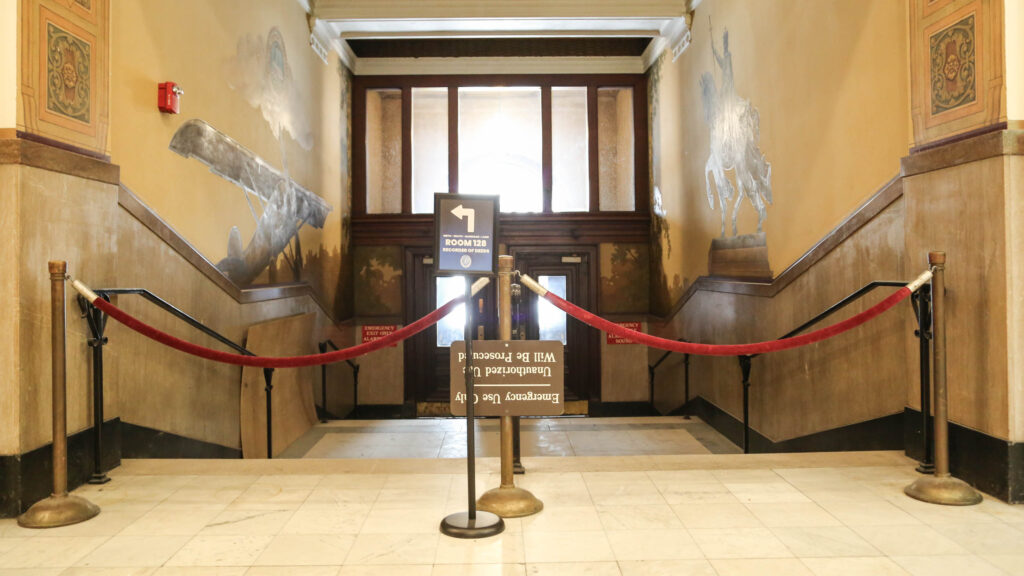
The City Hall south exit is barricaded with surplus furniture and a sign on an easel.
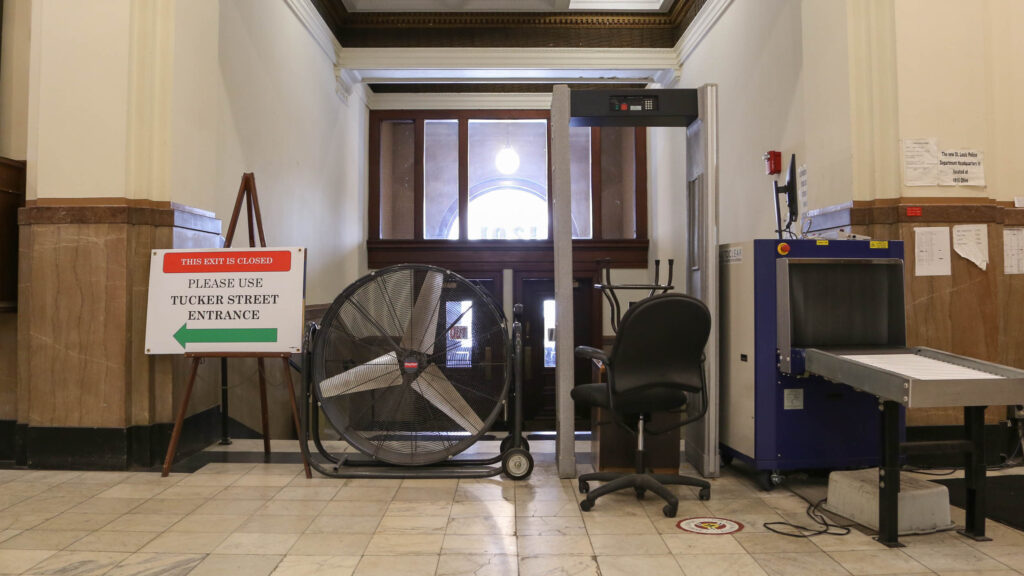
This sign isn’t working. May need to add another one.
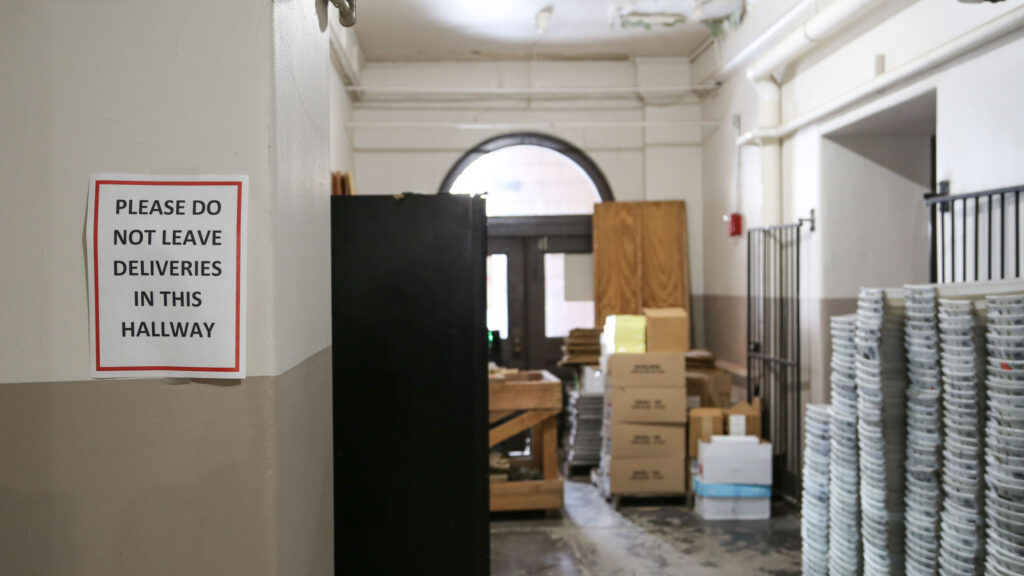
Another backwards counterintuitive exit on the south side of City Hall that requires giant signs to overcome user expectations.
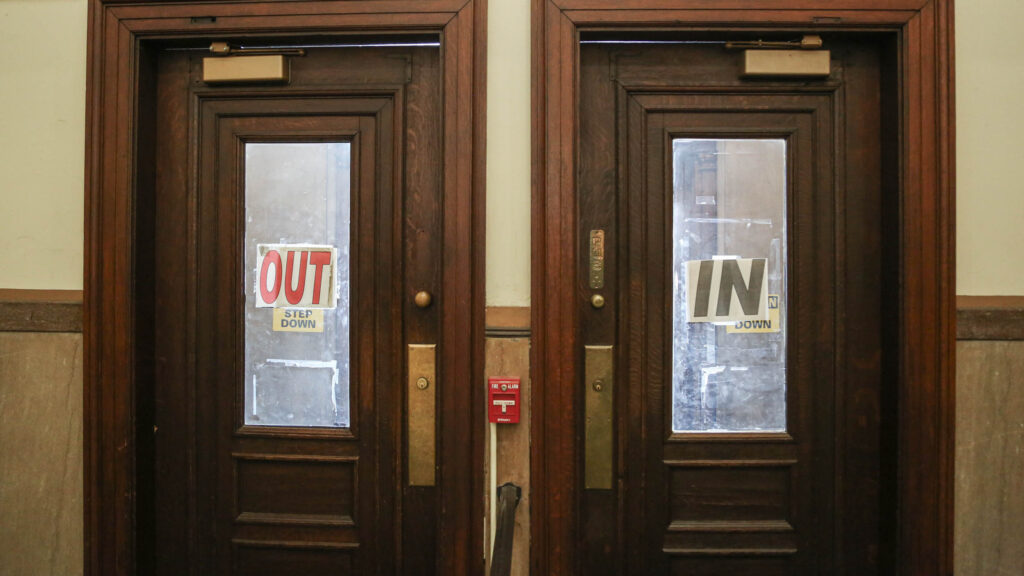
The pandemic ended two years ago. Are these COVID signs that are plastered everywhere now permanent like the 9/11 signs? And why did someone need to make their own paper sign for the women’s restroom?
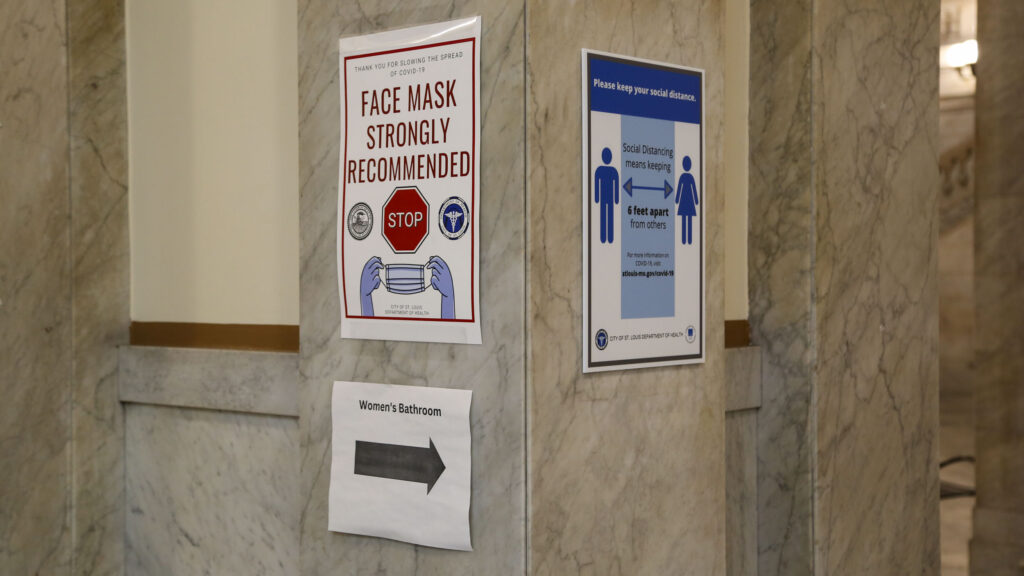
One of the most ubiquitous printed signs at City Hall are the ones telling you there’s an ATM on the first floor. As more people want to pay by credit or debit card, City Hall fights back with more paper signs redirecting them to an ATM. City Hall appears to be winning the battle, as there are about 37 of these signs taped to the walls and zero people paying by credit card.
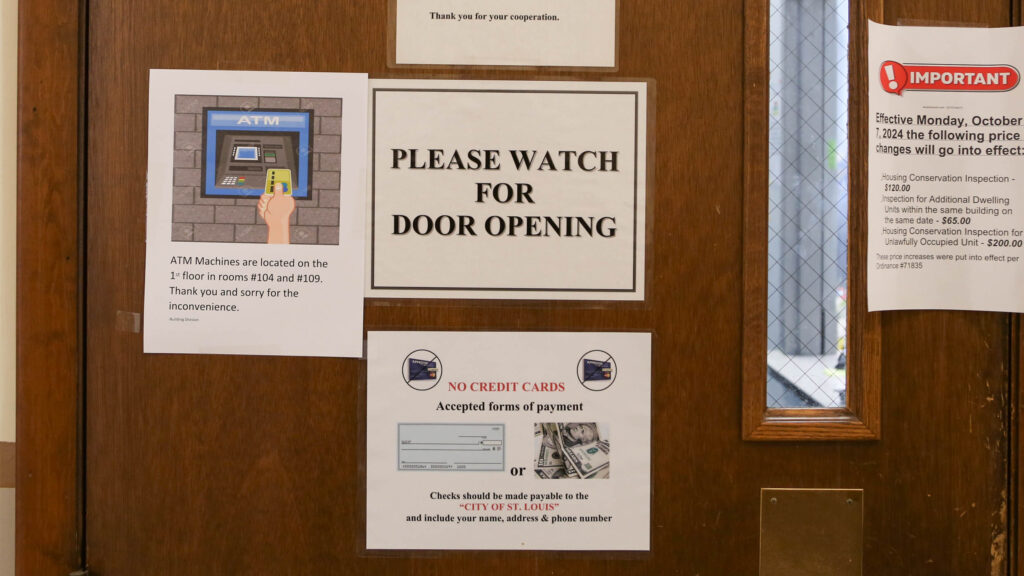
St. Louis City Hall is a model for bad user experience design. Everything from aesthetics to processes communicates a complete disregard for the user, their time, their preferences, and even their safety.
The state of City Hall is the state of our city. It’s a reflection of how we treat our built environment and our cultural heritage. It’s how we handle basic city services, maintain our streets and alleys, and how we treat our people – residents, business owners, property owners, and visitors. Those in need and those with means. And equally important, it’s how we treat our employees.
Why would anyone follow through with a job application after experiencing this hellscape first-hand during their interview? It’s no surprise we struggle to fill vacant positions.
We have the talent and resources to fix this. Kiku Obata & Company, founded here in St. Louis in 1977, is an internationally recognized pioneer in wayfinding signage and environmental design. There are numerous other highly-talented local companies specializing in architecture, interior design, signage, user experience, and process development that we can enlist for help.
But it will take leadership from the Mayor’s office, and buy-in from county officials to create a less frustrating and more intuitive experience for everyone.
As we debate how to spend the Rams settlement money, it’s worth considering the return on investment we would get by investing in human-centered design and improving the user experience at City Hall.
All photos included here were taken on February 18, 2025.
